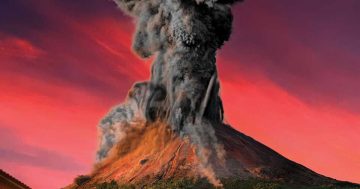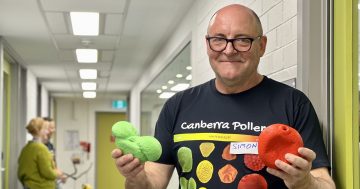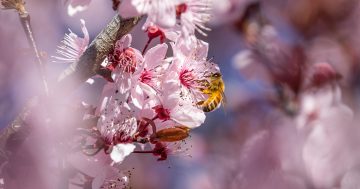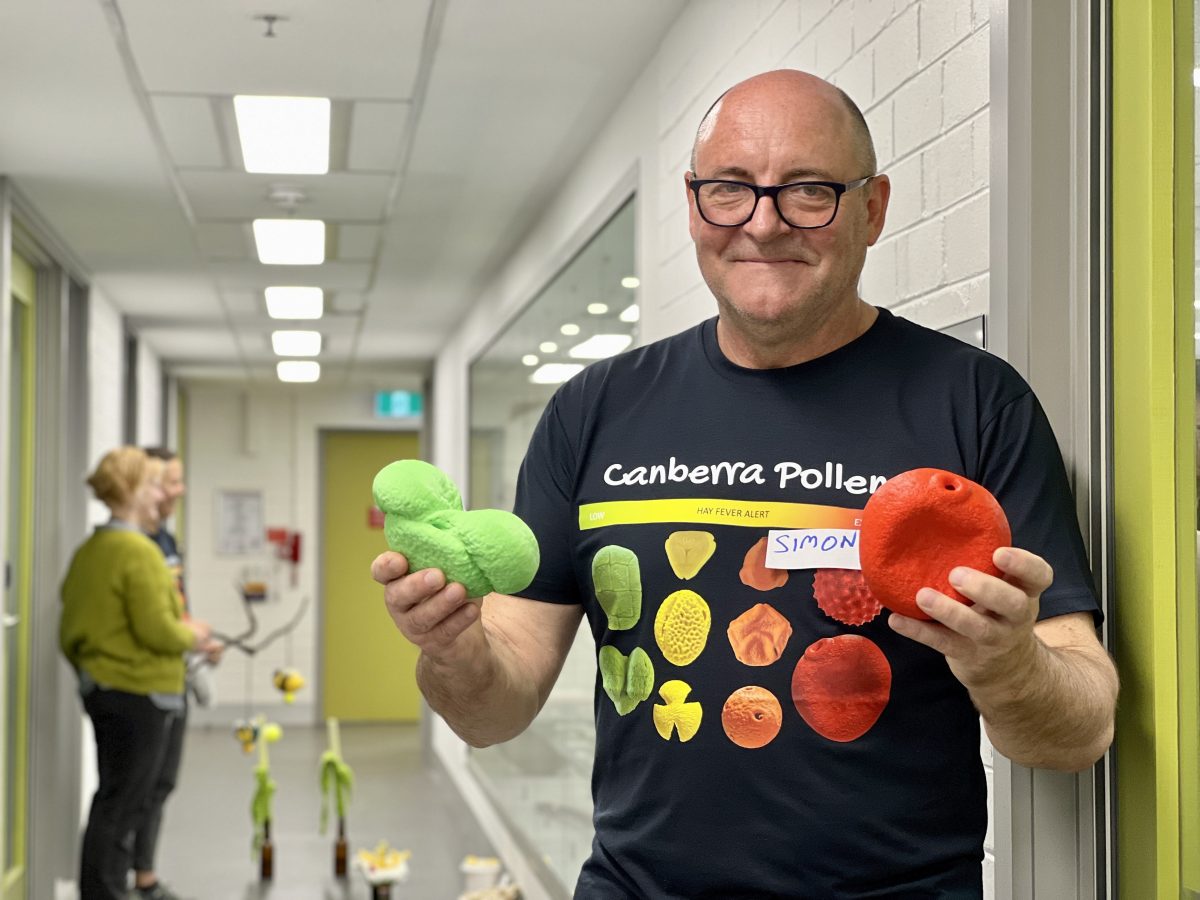
Dr Simon Haberle with some 3D-printed pollen. Photo: James Coleman.
If the runny nose and watery eyes haven’t started for you yet, they’re about to.
Canberra’s collection of pine, elm, birch, ash and poplar trees are the first to release clouds of fine yellow dust into the air each spring, but the really problematic pollen arrives later in September.
And it’s bang-on schedule this year.
Canberra Pollen, run through the Australian National University (ANU) and supported by ACT Health, has counted the amount of pollen in Canberra’s air for nearly 12 years. It tweeted the news on Wednesday (27 September), that the dreaded ryegrass pollen had arrived.
“It has started,” the social media post read.
“Wednesday was the first day we recorded grass pollen in our pollen counts for the CBR 2023-24 grass pollen season. Green grasslands around CBR suggest we’re in for an average to above-average grass pollen season ahead.”
The announcement coincided with the first Pollen Immersia Day at the ANU, hosted by “Australia’s leading experts on pollen”.
Students, staff and interested members of the public were invited to find out how pollen levels are counted, look at grains under the microscope, play “fun games” designed to show the science behind pollination, watch hand-sized pieces of pollen be churned out of a 3D printer, and generally have the chance to have questions on all things pollen answered.
It has started!
Wednesday 27th was the first day we recorded grass pollen in our pollen counts for the CBR 2023-24 grass pollen season.
Green grasslands around CBR suggest we’re in for an average to above average grass pollen season ahead. #XPTCBR pic.twitter.com/ogi9ZtfEix
— Canberra Pollen (@CanberraPollen) September 27, 2023
Lead researcher Professor Simon Haberle (or ‘That Pollen Guy’ on X) said Canberra Pollen has gathered lots of data and developed free apps over the years so Canberrans can “engage with pollen information”.
“But we felt it was about time to really open up the science to the community and give the community the chance to come along and just see the work we do and perhaps better understand some of the science behind it.”
For instance, the pollen is counted using an air-sampling device called a ‘Burkard spore trap’. This captures the pollen on a glass slide, which is then removed twice a day and counted. The number you’ll see published on the Canberra Pollen website and app every day over the coming months includes pollen from grass and other forms of flora caught in the trap over the previous 24 hours.
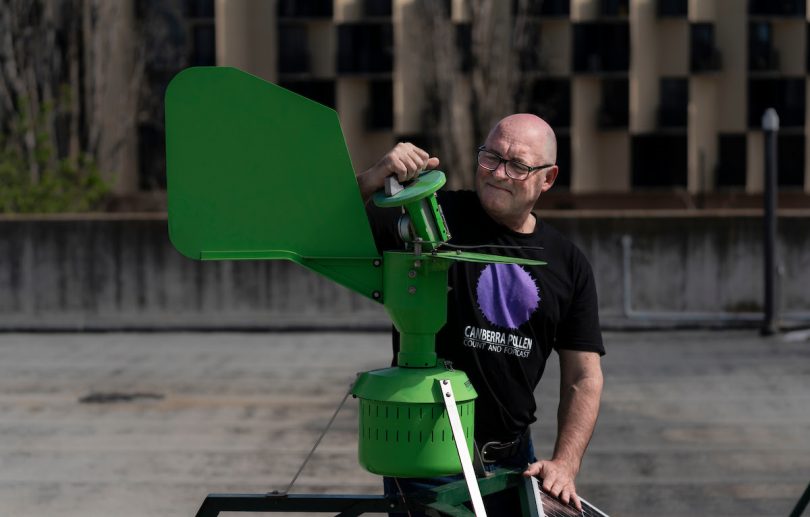
Professor Simon Haberle using the Burkard spore trap. Photo: Jamie Kidston/ANU.
They’re not counting for the fun of it.
Allergic rhinitis (or hay fever) affects about 18 per cent of people in Australia and New Zealand, and asthma around 10 per cent. The ACT has the highest rate of hay fever in Australia, affecting almost one in three residents. Asthma affects one in nine Canberrans.
“Pollen has a significant impact on the community,” Simon said.
“Hopefully [this event] helps people in the long run to better understand what’s causing their wheezing and sneezing.”
The open day forms part of a broader suite of ‘Immersia’ festivals held by the School of Culture, History and Language, designed to showcase the university’s research to the community.
Communications and Outreach Coordinator Gouri Banerji said people may not associate pollen with culture, history and language, but “it’s a massive part of what we do at the archaeology and natural history department here”.
“Everybody knows about pollen, everybody knows about hay fever and allergies, but people just assume it’s something scientists discuss behind closed doors in labs, but the lab doors are open today.”
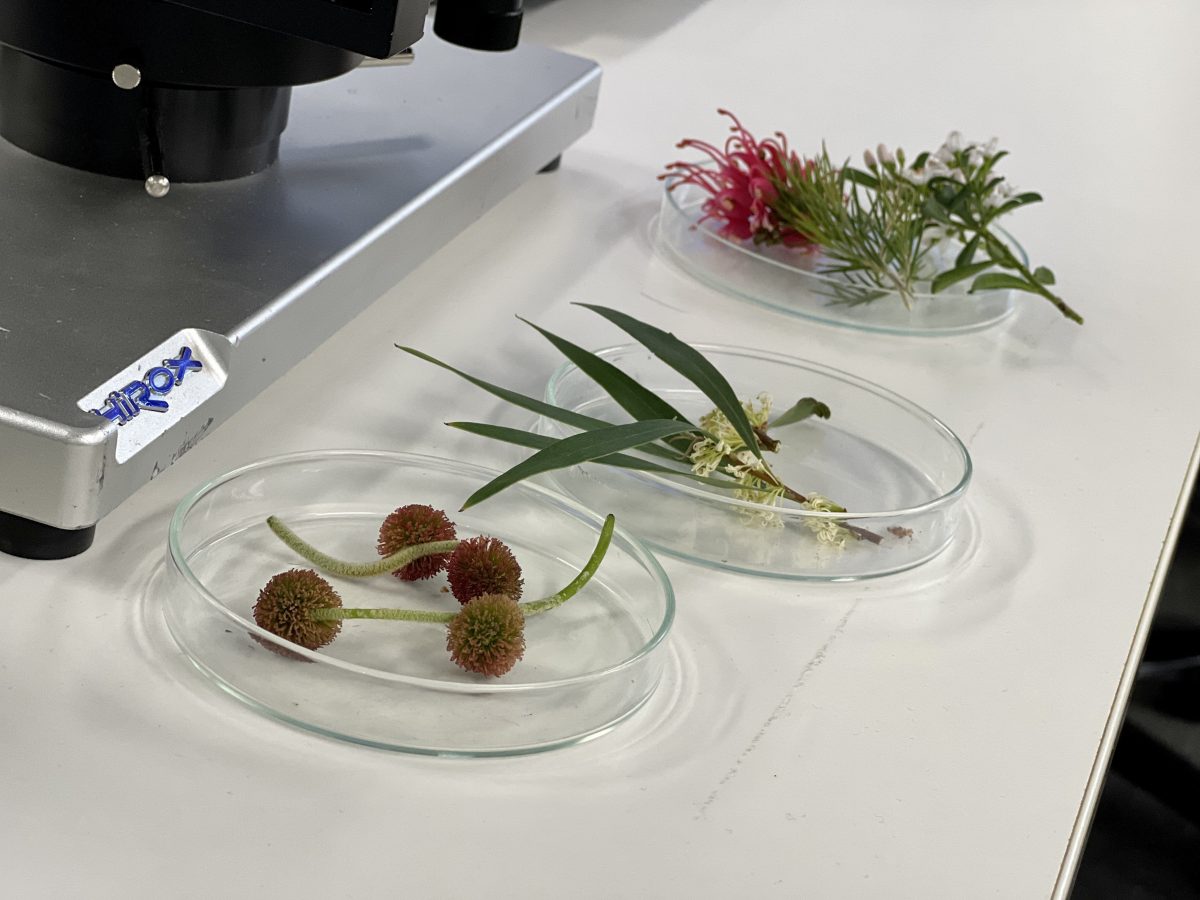
The nasty stuff itself. Photo: James Coleman.
Gouri hails from Delhi originally, but it didn’t take long for her to receive an asthma diagnosis after moving to Canberra.
“I think Delhi is pretty infamous for its air quality and pollution, but I never had anything there,” she said.
“My second year in Canberra, and suddenly I was diagnosed with asthma. I now suffer every time spring comes.”

Even the kids joined in. Photo: James Coleman.
She’s since learnt a lot from Simon and the Canberra Pollen project, including how not to blame wattle trees, no matter how yellow and dusty they might appear in spring.
“One of the myths that got busted for me by Simon was that I used to always think it was the wattle trees, but it’s actually not – they are not very hayfever inducing.
“It’s very useful to know these things, and they also inform me if I have to go to my GP and ask questions because I’m already well informed and know the right questions to ask.”
The plan is for the ANU Pollen Day to return sometime next year.











